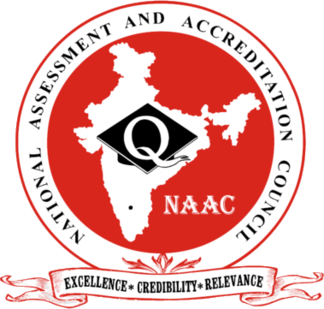Courses Offered
B.A. with History
Faculty Members (Department of History)
Syllabus
Click here to download syllabus
Objectives and Learning Outcomes
Detail of Courses
| Sr. No. | Class | Title of Paper | Course code | DSC I/ SEC I |
| 1 | BAI | History of India from Earliest times To up to 300 | HIST A 101 | DSC I A |
| 2 | BAI | History of India from C 300-1206 | HIST A 102 | DSC I B |
| 3 | BAII | History of India from C 1206-1707 | HIST A 203 | DSC I A |
| 4 | BAII | History of India from C 1707-1950 | HIST A 204 | DSC I B |
| 5 | BAII | Historical Tourism | HIST A 213 | SEC I A |
| 6 | BAII | An Introduction to Archaeology | HIST A 215 | SEC I B |
| 7 | BAIII | Modern and Contemporary World History I 1871-1919 | HIST A 305 | DSC I A |
| 8 | BAIII | Modern and Contemporary World History II 1919-1992 | HIST A 307 | DSC I B |
| 9 | BAIII | Indian History And Culture | HIST A 317 | SEC I A |
| 10 | BAIII | An Introduction to Indian Art | HIST A 319 | SEC I B |
| 11 | BAIII | Women in Indian History | HIST A 309 | GEN I A |
| 12 | BAIII | Environmental Issues in India | HIST A 311 | GEN I B |
Course wise Leaning Outcomes
| Course Name | Course Outcome |
| History of India from Earliest Times up to 300 CE
HIST A 101 |
1. Students got the knowledge of Paleolithic, Mesolithic and Neolithic culture.
2. Students understand the civilization: origin, urban features, economy, society and religion of Harappan culture. 3. Students got the knowledge of Mauryan Dynasty: Administration and Economy. 4. Students got the knowledge of Buddhism, Jainism and Magadha expansion. |
| History of India from 300 to 1206
HIST A 102 |
1. Students understand the state and administration of the Guptas and Vakatakas.
2. Students understand the political structure , religion, economy and cultural development. 3. Students will be able to know about the Harsha’s Kingdom , Buddhism and Nalandas. 4. Students able to get the knowledge of the Arabs administration. |
| History of India , c. 1206-1707
HIST A 203 |
1. Students understand the foundation, expansion and consolidation of the Sultanate of Delhi.
2. Students learn about the regional political formation of Vijayanagara and Bahamani Kingdoms. 3. Students perceive the knowledge of Sher Shah’s administration and revenue reforms. 4. Students able to understand the disintegration and decline of the Mughal Empire.
|
| History of India , c. 1707-1950
HIST A 204 |
1. Students understand the 18th century India in r/o society, economy and culture.
2. Students get the knowledge of expansion and consolidation of British power with reference to Bengal, Mysore and Maratha. 3. Students understand the socio-religious reform movement in the 19th century and after. 4. Students understand the uprising of 1857. 5. Students understand the peasant resistance to colonial rule. 6. Students understand the revolutionary movement for Indian Independence. 7. Students understand the Gandhian thought, techniques and movements. 8. Students understand the Indian Constitution and its features. |
| Historical Tourism
HIST A 213 |
1. Students able to understand tourism and heritage.
2. Students understand the built heritage in r/o of temple architecture, Stupa architecture and Indo-Persian architecture. 3. Students understand the temple architectures in Himachal Pradesh as tourist attractions: A study of Chamba ,Kangra and Mandi. 4. Students understand tourism in Himachal Pradesh. |
| An Introduction to Archaeology
HIST A 215 |
1. Students understand the origin and development of archaeology in India.
2. Students understand the management of archaeological evidences. 3. Students perceive the knowledge of discovering human experience through archaeology. 4. Students understand the numismatic and epigraphic sources. 5. Students understand the method of surveying and techniques of excavation. |
| Modern and Contemporary World History I: 1871-1919
HIST A 305 |
1. Students understand the main characteristics of modern and contemporary history.
2. Students understand the emergence of Italy and Germany as unified nations. 3. Students understand the emergence of USA after the Civil War. 4. Students know about the emergence of Japan as a world power. 5. Students understand the nationalist movements in Asia. 6. Students understand the end of the czarist regime in Russia. 7. Students understand the revolution of 1905. 8. Students understand the First World War and its aftermath. |
| Modern and Contemporary World History I: 1919-1992
HIST A 307 |
1. Students understand the Versailles to Locarno treaties and their political consequences.
2. Students know about the league of Nations 3. Students understand the era of great depression of 1929. 4. Students know the causes of the Second World War. 5. Students understand the nationalist movements and decolonization. 6. Students understand the Chinese revolution of 1949. 7. Students know about the cold war and its ideological and political origins. 8. Students understand the impact of the cold war on Europe, Korea, Vietnam and Cuban crisis. 9. Students understand the concept of globalization. 10. Students understand the Feminist and ecological movements. 11. Students understand the question of human right. |
| Indian History and Culture
HIST A 317 |
1. Students understand the environment; culture, tradition and practice in Historical overview.
2. Students get the knowledge of oral and codified information on medicinal plants, water & water bodies. 3. Students understand the issues of settlements and landscapes and social differentiations. 4. Students know about the social inequality and gender: status within household. 5. Students understand the employment status and distribution of resources. 6. Students understand the cultural heritage. |
| Introduction to Indian Art
HIST A 319 |
1. Students understand the key terms in art appreciation.
2. Students get the knowledge of Indian Sculpture, Iconography: Hindu, Buddhist and Jaina. 3. Students understand the temple, Mosque and Mausoleums architecture. 4. Students know about the Rock Cut Temple of Masrur and Colonial architecture in Shimla. 5. Students understand the Indian Painting historically in r/o Mural painting Ajanta, Mughal; miniature style and Pahari School of painting; Guler Kangra paintings. |
| Women in Indian History
HIST A 309 |
1. Students understand the theory and concepts of gender and patriarchy.
2. Students understand the women’s history in India. 3. Students understand the Brahmanical and non-Brahmanical patriarchy in India. 4. Students understand the women in medieval India. 5. Students understand the women and literary activities in medieval era. 6. Students understand social reforms and women in the 19th century. |
| Environmental Issues in India
HIST A 311 |
1. Students understand the human-nature interactions.
2. Students understand the geography, ecology and cultures in Pre-Colonial India 3. Students understand the resistance to new regimes: Peasants, tribal and pastoralists. 4. Students understand the Independent India and environment. 5. Students get the knowledge of forests, human- wildlife conflict, threat to bio-diversity. |


 NAAC Accredited Grade “B” Institute
NAAC Accredited Grade “B” Institute
